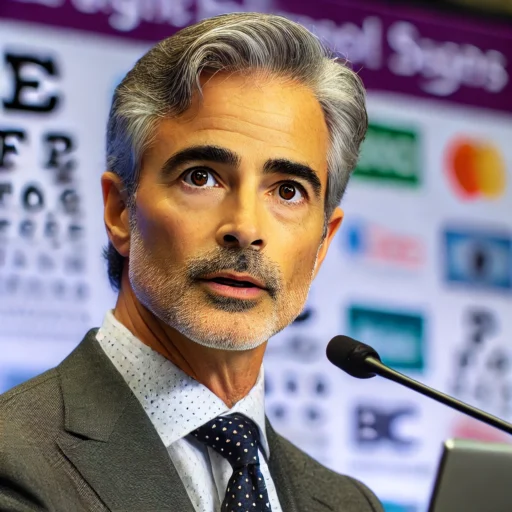


Dr. Shaun Segal Dispenses Student Eye Health Advice
July 29, 2025

Dr Shaun Segal





We’ve all been there as parents—our kid rubs their eyes, talks about a headache, or just spaces out over homework. We wonder: Is it just fatigue, or is something else happening with their eyes?
The truth is, good vision isn’t just about being able to see clearly—it’s about learning, confidence, and feeling comfortable in a world of books, screens, and schoolwork. I’m Dr. Shaun Segal, a Johannesburg pediatrician, and today I’d like to discuss something close to home: the eye health of students.
Following are a few signs, habits, and tips for ensuring your child’s vision is receiving the attention it needs.
1. Is Your Child Having Trouble with Concentration?
When a child can’t see well, the world isn’t right—and school is frustrating.
You may observe:
They squint when they look at the whiteboard
Hold a book up close to their face
Complain of headaches or sore eyes after reading
These aren’t quirks—they’re subtle hints from the body that say, “You need to help me with this.”
Untreated vision problems are one of the largest reasons why kids lag in school.
What I do in my clinic:
We get a close-up look at their reading posture, screen time, and study habits. A little vision screening and chat with your child can tell you more than you might guess.
2. The 20-20-20 Rule: Simple and Powerful
One of the most powerful habits I teach students is the 20-20-20 rule:
Take a 20-second break every 20 minutes
Look away from your screen at something 20 feet away
It de-stresses the eyes, provides the brain with a break, and prevents the accumulation of eye fatigue from homework or screen time.
Kids forget easily. That’s fine. My suggestion is to use timers, post-it notes, or even make it a game—whatever is best for your child.
3. Lighting: A Small Thing That Makes a Big Difference
A dark room and a bright screen is a recipe for weary eyes.
Here’s what works:
Natural light during study time
Screen brightness set to room match
Non-shadow-casting reading lamps
Good surroundings cause less eye strain. It’s a subtle change that packs a punch.
Recommended Reading:- Dr. Shaun Segal: Top Strategies for Preventing Childhood Eye Strain
4. When Screen Time Is “Eye Time”
Let’s get real—kids are on screens. Lots of them.
Whether Zoom lessons, video games, or YouTube, screens are not going away. But our eyes weren’t designed for that much-concentrated attention.
What I encourage parents to look for:
Dry or red eyes
Less blinking
Trouble sleeping
Eye rubbing or watery eyes
Reminding kids to blink more, take breaks from technology, and dim screens before bedtime come a long way. And yes, blue light glasses or filters may be helpful—but they’re not a magic bullet. Balanced use is still a must.
5. Outdoor Play = Healthy Eyes
A child’s eyes require sunlight and far vision to mature correctly.
That’s why I suggest a minimum of 1 hour of outside time each day—biking, walking the dog, playing in the yard. It’s great for the body and mind, plus it prevents nearsightedness as well.
If we’re going to have healthy, strong eye muscles, we can’t leave them glued to screens all day.
Bonus Tip: Food for the Eyes
Yes, nutrition is important here as well.
Some vitamins and minerals help maintain strong, healthy vision:
Omega-3s (in fish, walnuts, flaxseed)
Vitamin C & E (berries, citrus fruits, spinach, almonds)
Zinc (whole grains, beans, eggs)
A rainbow plate means a satisfied pair of peepers.
How I Assist as a Pediatrician
I practice with a gentle but careful touch:
We discuss screen use, school stress, and daily habits
I examine for red flags such as eye alignment, visual following, and eye strain
If necessary, I refer for a complete eye exam with a pediatrics optometrist
It’s not only “Can they see the chart?” It’s “How do they feel when they read, when they learn, when they discover?”
Final Thoughts: Trust Your Gut
No one knows your child like you do.
If something feels off—eye rubbing, poor focus, constant headaches—it’s worth checking in. Early action can save months of struggle in class or confusion at home.